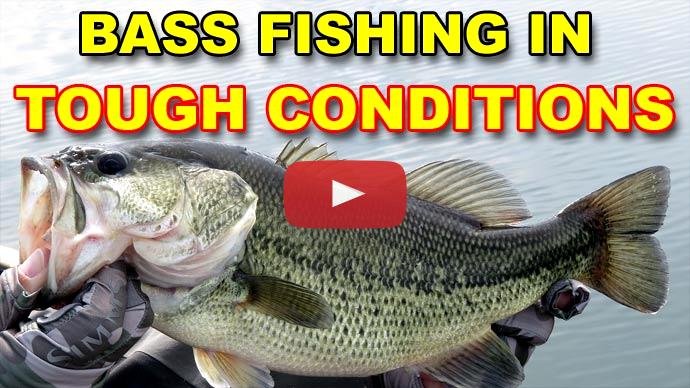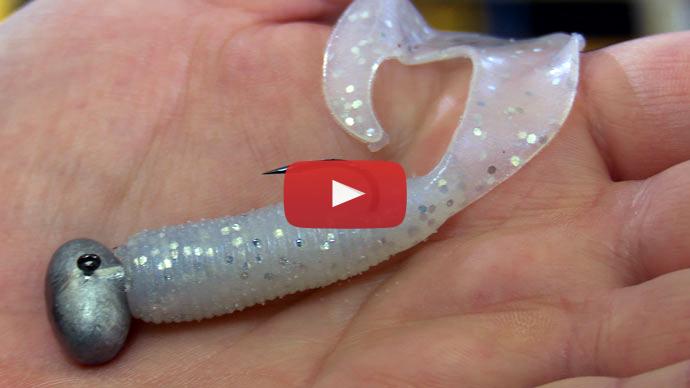So, how do you deal with cold fronts during the fall? There's no straight answer because, boy, conditions change rapidly during this season, and cold fronts affect the bass and the forage different depending on where you are during the fall season.
So, let's start off right there in the beginning. Early in the fall, late summer, a lot of times when the fronts come through, they're pretty weak. They really don't have a big impact. They sometimes don't even have rain associated with them. It's just a dropping of the temperature sometimes by only a few degrees. When those first start coming through after you've had the dog days of summer, it's been really just scorching hot, that shift indicates to the fish that, "Hey, winter's on its way. It's time to start feeding up and getting ready for it." So, they start heading up towards the shallows.
Now, they're not gonna make this big migration from the deep water right to the shallows, you know, the first front comes through. No, not that, but they'll start making their way towards it.
So, when those first few fronts come through, the good place, the good areas to go fishing is, like, outside points that lead into, you know, right near a cove or a creek channel, mainly in the main part of the lake before it leads into the cove, any kind of bluffs, things like that, places where the fish can stage up and get ready to go. It's much like pre-spawn, if you've done a lot of pre-spawn fishing before, it's the similar kind of thing. They stage up on these areas, getting ready before they move up real shallow. So, a little bit shallower than they have been during the summertime, but not super shallow.
As the fronts progress, as fall progresses, they get a little bit stronger, and now the bass and the forage start moving back into the backs of the creeks, back in the bays, get up shallower.
Again, they don't go all shallow right now. So, perhaps what you would do is go into a cove, and if it's got a creek channel in it, fish right in the middle of that cove, fish right in the middle of that creek channel. The deepest part of that bay is probably where they're gonna be that time of year.
If you don't have Shad, if you don't have creeks, if he's got a natural lake, it's still the same sort of thing. They're gonna use weeds, they might be in the deeper weed lines, you know, outside weed lines at this time of year. Same scenario, though. They're moving up shallower and shallower.
Now as the fronts progress, the water temperature gets colder, you now have more, you have stronger fronts. First of all, the forage all get up shallow. They're all feeding. And during this time, all this time between, you know, when I just started right to where they're all shallow, this is when it's best time to go and just whack them. Man, they are actively feeding, they're hungry, they're attacking everything. You can throw basically anything, but baitfish imitating baits tend to dominate right now because the bass are feeding on that. So, anything that imitates a dying baitfish, injured baitfish, or just fast-moving baits like spinnerbaits, crankbaits, topwater lures, those are the things to be throwing right now, and you can have yourself a heyday.
Thing is because these fronts come in, the bass and baitfish can be there one day and the next day, [vocalization] gone. They just take off and they go deep. And then a few days later, there they are again. So, this is what makes it real frustrating because now as the fronts get stronger, it has a more negative effect on the fish.
Now if you've got a big front that comes through right after the front, this is the post-front conditions, this the dreaded post-front conditions, the sunny bluebird days and skies, you've had this rainy front come through, wind, maybe even thunder and lightning, and now it's all calm and nice and wonderful out. Well, a lot of times the bite has died off too, and the fish have vacated the shallows. And they'll be gone for two, three days, and then they'll come back, and the bite will be back on again.
So, if you can plan around it, fish just prior to the front, if you can do that, just prior to the front. And as the front is just starting to come through is the best time because the fish will really fire up, and they'll be biting like crazy and you can, again, throw those fast-moving baits and catch a ton of fish. Provided, now, you know, watch the weather, guys. If there's a thunderstorm coming through, get off the water. No fish is worth your life. So, please pay attention to the weather forecast and your skies around you. If it looks like lightning, get off the water. Otherwise, have a great time.
Now, if you don't have a choice, and can't really schedule around those fronts, and you have to fish those bluebird cold front days, well, there's ways to catch bass during that time too. First of all, you gotta slow way down, way down, and fish methodically. Now you're fishing slow-moving jigs, you're fishing slow-moving worms, even small-sized baits like tube baits, grubs, put them on a drop shot, put them on a split shot rig. You're very methodically and carefully, slowly presenting because everything is slowed down, right? All the bait fish, all the forage, everything's moving lethargically. A lot of times the bass have just buried up in the closest cover they can find, and they don't wanna come out, they don't wanna play. So, you have to entice them with slow-moving baits and basically dance it right in front of their face. That's kind of what you gotta do.
Another tactic also is to flip and pitch. Again, they're not gonna be deep. They'll still be shallow, but they're gonna be buried up in this cover if there's, you know, weeds, you know, hydrilla, milfoil, anything like that, they're gonna be buried up in it, any flooded timber or bushes. So, flipping and pitching, a jig or a worm, or a Texas rig bait can be outstanding during this cold front condition. And again, it improves the further away you get when that cold front came by. So, the first day after that cold front, it's bad. The second day, it's usually badder. It's worse. And then it improves after that. The fishing gets better. So, keep that in mind. You can adjust as necessary.
And then finally, when you get towards the very end, in the fall, with all those fronts coming through, the fish and the vegetation starts to die off. The water is really cooled down. You see brown vegetation that's consuming oxygen rather than providing it. Fish are gonna vacate those areas and start moving back deep. Just the same routes that they used in the early fall when they came back in, now they're gonna use those same humps and points and creek channels coming back out to deeper water. So, follow them out that way. And you got to start slowing down your presentation. The colder the water is, the less active the fish are. So, those fast-moving baits, you start to put those away and go to more slow-moving baits in presentations in deeper water as they transition into winter. So, that's how you approach the different conditions based upon the fronts that come through during the fall. Hope that helps. For more tips and tricks like this, visit bassbesource.com.



